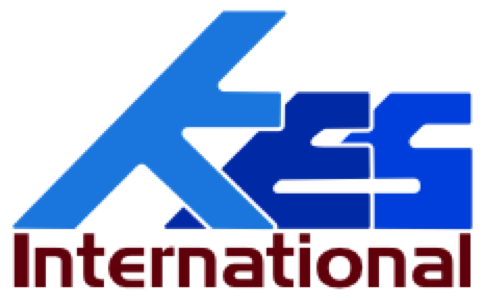Dr Martin Anda
Academic Chair of Environmental EngineeringMurdoch University, Australia
Integrating Energy and Water Systems in Smart Districts: The RENeW Nexus project in Fremantle, Western Australia
Dr Martin Anda, Murdoch University
Prof Greg Morrison, Curtin University
Karla Fox-Reynolds, Curtin University
Meagan Cojocar, Power Ledger
Dr Stewart Dallas, Murdoch University
Dr Mario Schmack, Murdoch University
Dr Roberta Fornarelli, Murdoch University and Curtin University
Furat Dawood, Murdoch University
Warren Phillips, Landcorp
Phillida Rodic, City of Fremantle
Cade Taylor, Defence Housing Australia
Abstract:
Cities, districts and buildings of the future can use integrated data and blockchain technology to integrate distributed energy and water systems infrastructure. Highly resilient, low carbon and low cost systems - solar assets, an electric vehicle (EV), water storage and treatment, and community battery storage - can be operated via blockchain to offer the community financial and essential service sustainability alongside existing utilities while engaging the private sector. Blockchain technology and data analytics can enable the implementation of a range of onsite infrastructures for energy, water and waste management to demonstrate the interconnected infrastructure of future smart cities. Onsite energy, water and waste treatment systems will circumvent the need for costly distribution overhauls. In the City of Fremantle, blockchain technology and data analytics will enable the orchestration of distributed energy and water systems in three ways. Firstly, a 1MW battery system will be grid-connected within the City. Secondly, rooftop solar PV, an EV and charge station, and precinct water treatment and capture systems will be designed for the "old Museum site" of the Knutsford precinct under development by Landcorp. Thirdly, residents, community organisations and businesses in the City are invited to register online their onsite energy and water systems in readiness for metering, data collection and peer-to-peer trading. Combined, they will demonstrate the interconnected infrastructure of future smart cities.
This project provides innovation by creating a network of sustainable assets, joining them in a reinforcing relationship, facilitated by the blockchain technology. Using blockchain technology to offer a viable solution for linking dispersed essential services is a state-of-the-art model. The blockchain applications have been developed and trialled within the past year, but have not been previously used to manage the transactions of community-shared battery storage nor water or waste systems. The blockchain has been used in pilot projects in Europe to support EV sharing platforms and facilitate associated transactions, but this is the first project to trial the concept in Australia. The RENeW Nexus project will generate large amounts of electricity and water data from the city, such as, but not limited to, consumption and demand data, the water data registry, purchasing data and community storage data, including demand and supply data, and utilisation rates. The smart technology used is EcoChain, a low energy and ecofriendly blockchain. It is a proprietary technology of Power Ledger (PL), a Perth-based start up. It is necessary to use proprietary software as no ephemeral or non-proprietary technology is available in this new market area. The risk of relying on one technology provider is mitigated by the inclusions of two other technology providers, CISCO and Data61. The blockchain will manage the information share between consumers (such as metering and billing usage), the resources themselves (utilisation information, forecasting, and billing) and the market (deciding when to sell and when to buy) to ensure the integration and utilisation of the assets on the platform. Blockchain technology reduces transaction costs by keeping a single, immutable copy of transaction records on thousands of nodes, avoiding the need for reconciliation and settlement, and significantly improving the security of the transactions. Through this technology, customers can be charged real-time prices and their accounts may be debited or credited in real-time, rather than aggregating these transactions month-by-month. The interoperability of the blockchain solution within the electricity grid has been proven in the White Gum Valley (WGV) community, where the technology is currently employed. Beyond that, the WGV data will be used as a reference case for the water smart grid and management of onsite water treatment powered by onsite solar PV, as a similar system exists there without the smart technology. This project will use a transactive blockchain layer for water, the first of its kind, which will house data on the consumption, usage storage of water. This data will provide insights into community water needs and will inherently present system efficiencies. The EV, battery storage and water recycling systems will not only complement the distribution networks, but will solve a host of problems for them, such as balancing the load of the electricity grid and relieving pressure on the water distribution system that is now reaching capacity limitations.
This project is supported through the Smart Cities & Suburbs program of The Australian Government.

Biography:
Martin Anda is an environmental engineer with over 30 years experience in the water, energy and built environment sectors since completing a Bachelor of Engineering (Mechanical) degree in 1982 at The University of Western Australia. After several years of working with consulting engineering firms on large industrial projects, followed by working overseas in developing countries and across Australia with remote Aboriginal communities, he led the design and construction of award-winning research buildings at the Environmental Technology Centre. Today, Dr Anda is Academic Chair and Senior Lecturer in Environmental Engineering at Murdoch University in Western Australia where teaches units in engineering and coordinates a team of postgraduate researchers in a group called Environmental Engineering & Life Systems (EELS) that are conducting a range of PhD research projects across the built environment sector.
Back to Keynote Speakers

